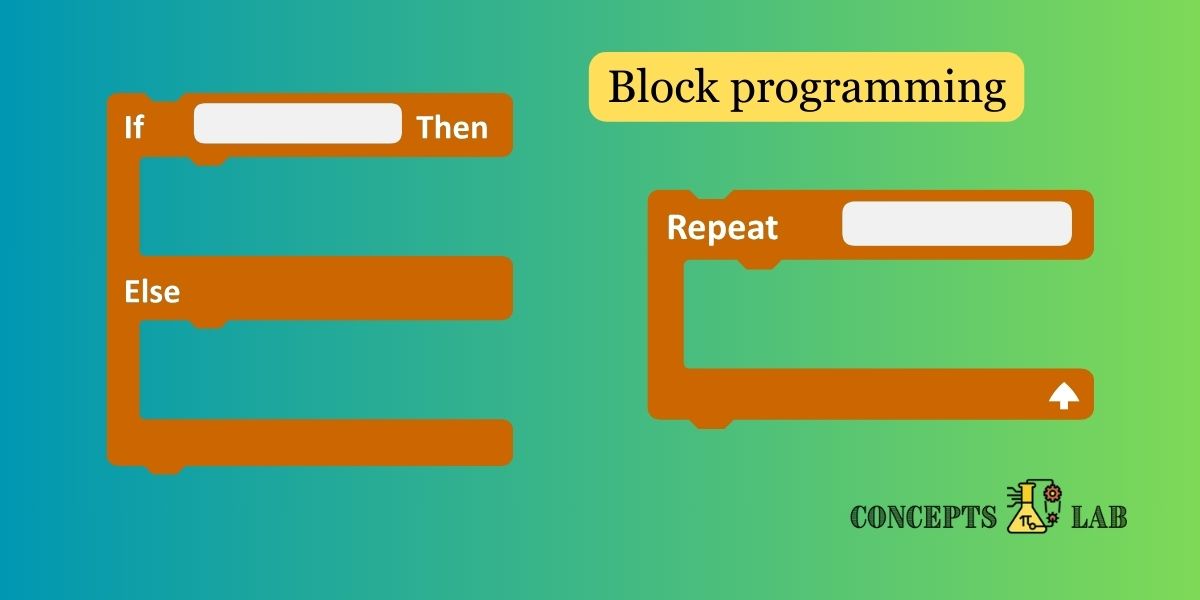Block programming, also known as visual programming or block-based programming, is a programming paradigm that uses visual elements, typically blocks, to represent code structures. This approach simplifies coding by eliminating the need to write text-based code and instead allows users to assemble programs by dragging and dropping visual blocks that represent different programming constructs.
Key characteristics of block programming include:
- Visual Blocks:
- Instead of typing lines of code, programmers work with graphical blocks that represent coding constructs such as loops, conditionals, variables, and functions. Each block has a specific purpose and fits together like puzzle pieces.
- Drag-and-Drop Interface:
- Programmers build their code by dragging and dropping blocks onto a programming canvas. The blocks are designed to snap together, ensuring syntactical correctness.
- Colorful and Intuitive:
- Visual blocks are often color-coded and include icons or text to represent different programming elements. This makes it more intuitive, especially for beginners who might find traditional text-based coding daunting.
- No Syntax Errors:
- One advantage of block programming is that users are less likely to encounter syntax errors. Since blocks fit together based on the rules of the programming language, users can see at a glance if the structure is correct.
- Accessibility for Beginners:
- Block programming is particularly popular in educational settings, especially for teaching programming to beginners or children. The visual nature makes it accessible and engaging, allowing learners to focus on logic and problem-solving rather than syntax.
- Blockly and Scratch:
- Blockly and Scratch are popular block programming languages used for educational purposes. These platforms offer a visual, drag-and-drop interface, making it easy for students to learn coding concepts without the complexities of traditional coding syntax.
- Transition to Text-Based Coding:
- Block programming is often used as a stepping stone for learners. Once they grasp programming concepts using visual blocks, they can transition to text-based coding languages with a more solid understanding of fundamental principles.
- Widely Used in Educational Apps:
- Many educational apps and games designed to teach programming to children use block programming. These apps often provide a playful environment where kids can experiment with coding concepts in a visually appealing way.
- Event-Driven Programming:
- Some block programming environments, such as Scratch, focus on event-driven programming. Users can create programs that respond to events (like mouse clicks or key presses), allowing for the creation of interactive projects.
- Community and Sharing:
- Many block programming platforms have an online community where users can share their projects, providing opportunities for collaborative learning and inspiration.
In summary, block programming simplifies coding by using visual elements, making it a powerful tool for beginners, especially in educational contexts. It emphasizes the logic and structure of programming without the syntax challenges of traditional coding.


No responses yet